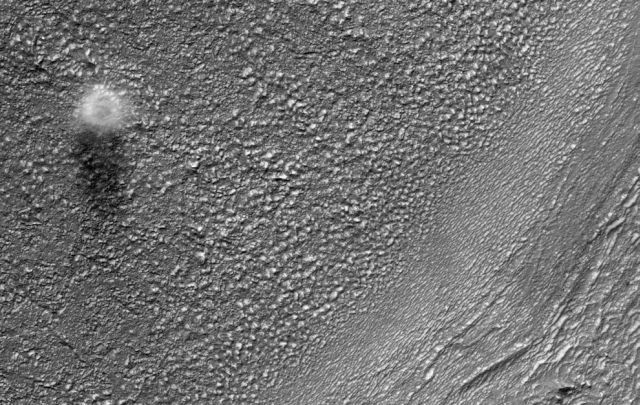|
|
Mars Surface
|
A third possibility is the involvement of a third body or some kind of impact disruption. More recent lines of evidence for Phobos having a highly porous interior and suggesting a composition containing mainly phyllosilicates and other minerals known from Mars, point toward an origin of Phobos from material ejected by an impact on Mars that reaccreted in Martian orbit, similar to the prevailing theory for the origin of Earth's moon. While the VNIR spectra of the moons of Mars resemble those of outer belt asteroids, the thermal infrared spectra of Phobos are reported to be inconsistent with chondrites of any class.
Life
The current understanding of planetary habitability—the ability of a world to develop and sustain life—favors planets that have liquid water on their surface. This most often requires that the orbit of a planet lie within the habitable zone, which for the Sun currently extends from just beyond Venus to about the semi-major axis of Mars. During perihelion Mars dips inside this region, but the planet's thin (low-pressure) atmosphere prevents liquid water from existing over large regions for extended periods. The past flow of liquid water, however, demonstrates the planet's potential for habitability. Some recent evidence has suggested that any water on the Martian surface may have been too salty and acidic to support regular terrestrial life.
|
|









